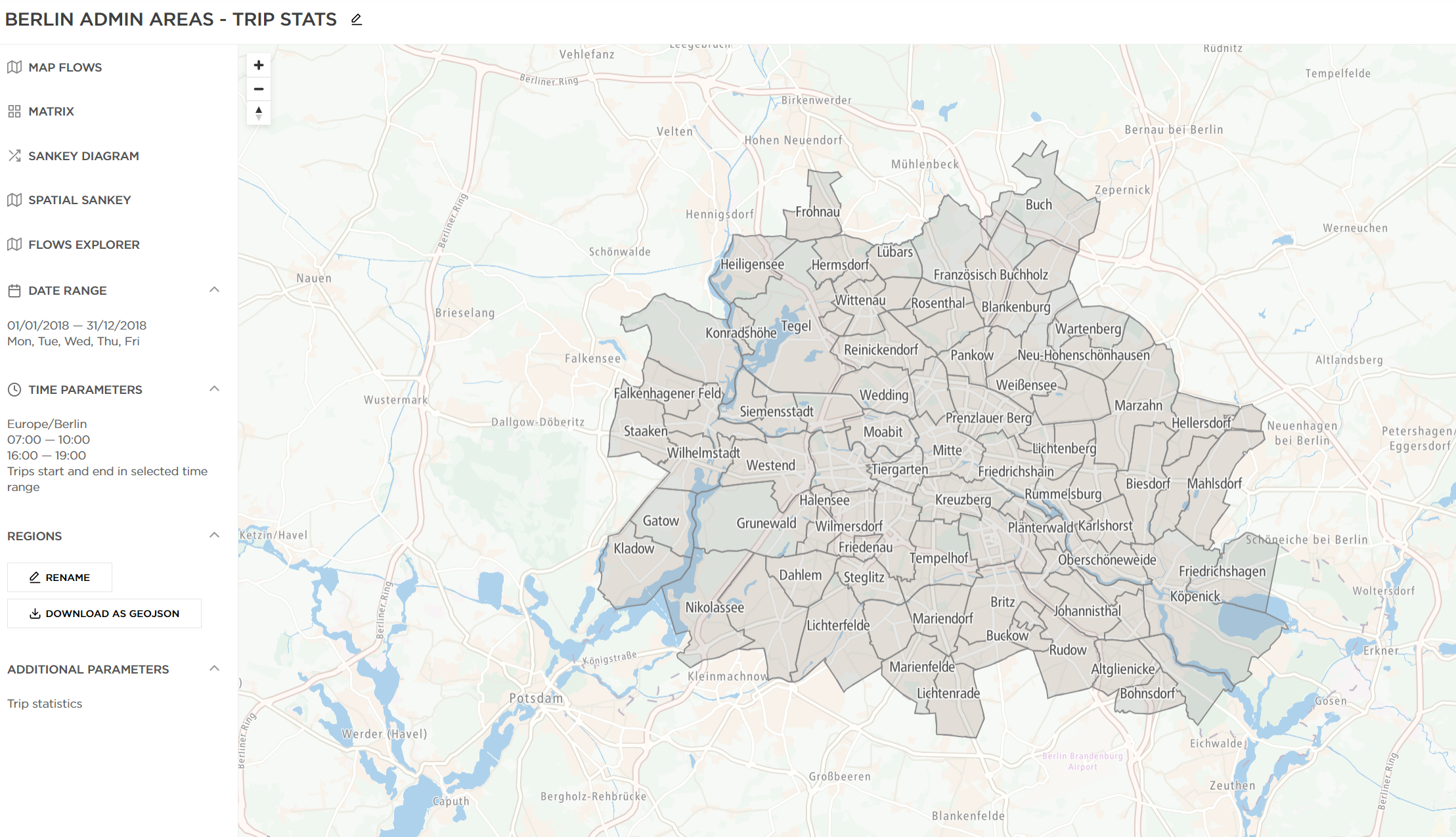Our algorithms analyze the probe traces coming from each device. The analysis recognizes the pattern of a regular trip within any area. Probe traces are sequences of probe points that come from the same device. These sequences define the concept of a trip.
Our systems behind O/D Analysis tool connect all these probe points, known also as "GPS pings", with a single line and that line of connected pings creates a single vehicle trip, with its start point and end point.
The GPS pings of a trip originate from the same anonymous device ID to make sure we are dealing with the same, unique journey while calculating the analysis results.
The trips come from completely anonymized data and guarantee a highly secure content level. This protects individual devices from being associated with specific drivers. The origins and destinations are always associated with polygons (cities, districts, neighborhoods, postal codes, and so on) and as such, cannot be linked to a specific residence or business building.

Based on the area/polygon definition, TomTom O/D Analysis defines the origins and destinations based on the trip start point and end point, according to each FCD provider’s typical behavior. For example, mobile and automotive data are interpreted differently.
Map Matching
O/D Analysis also supports map matching which is a process that "snaps" GPS positions to the road network. Applying map matching to a trip removes inaccuracies that come from GPS low precision or small gaps in signal.
- The map matching option is enabled if the convex hull area of regions in the analysis is below 3000 km² - its presence is indicated by being able to select the map version while defining the zones:


- The map matching option is disabled in case the convex hull area of all the regions in the analysis is bigger than 3000 km², as this process heavily affects the calculations power required to map match all the traces on such a big scale.
The lack of this option is indicated by not being able to select the map version while defining the zones, with proper information visible under the "?" symbol:

Map matching has a great impact on the results quality. To determine flows between regions the tool is analyzing trips in the area. Let's look at the example how map matching can be beneficial for calculating results and how some of the trips would look like if there was no map matching in the tool.

In the example above, on the left we can see a trip with original GPS positions and on the right the trip was map matched to road network. In this case, without map matching the tool would observe that the trip went through the Region A but not through the Region B because of the gap in the signal which produces counterintuitive results.
With option "Trim to defined regions" enabled such trip would be counted as an Internal trip of Region A — meaning the trip was first and last seen in this region.
After map matching the trip is "snapped" to the road network and produces the results we would expect — the trip goes through Region A and Region B.
NOTE! Keep in mind that due to privacy precautions the true starts and ends of a trip are trimmed, so for example, if a vehicle ended its journey at a specific household address, it will not be possible to pinpoint that trip to a specific person living in that area.
